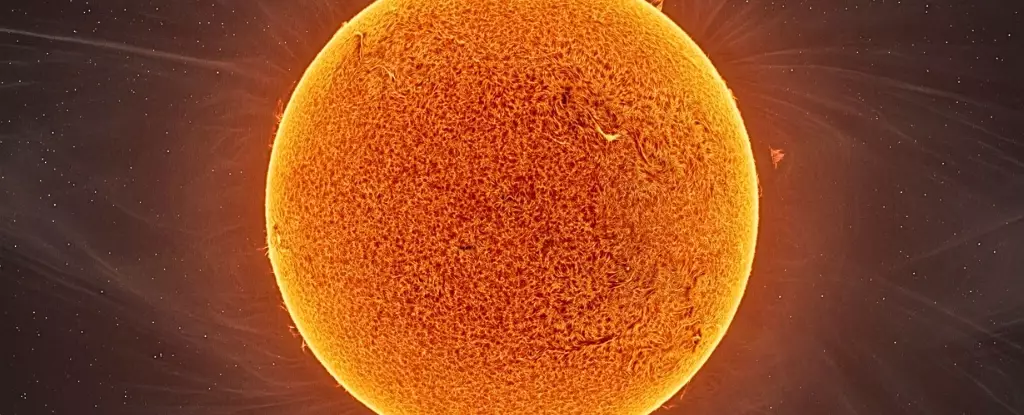The cosmos is not just a visual spectacle; it is an orchestra whose harmonious and dissonant notes lie in the vibrations of stars. Recent research has unveiled a startling revelation: the “music” of starquakes—massive oscillations resulting from the explosive release of gas bubbles within the stars—can provide us with profound insights into stellar evolution that had previously gone unnoticed. The study, conducted in the M67 star cluster, roughly 3,000 light years away, demonstrates the startling depth of astronomical understanding available through the frequencies emitted by stars, much akin to geologists interpreting seismic activity on Earth.
Astronomers have predominantly focused on visual characteristics to analyze celestial bodies. However, the new methodology leans towards auditory analysis, positioning starquakes as cosmic melodies waiting to be deciphered. With data gleaned from the Kepler space telescope’s K2 mission, researchers have opened a new window into the life cycle of stars, revealing a previously underappreciated layer of complexity in their behaviors.
Starquakes: Nature’s Metaphor for Change
Natural phenomena often serve as metaphors for human experience, and starquakes are no exception. Just like the fiery turmoil in a star’s outer layers can cause a latent ‘song’ to emerge, our own lives are awash with potential eruptions of creativity and change. The groundbreaking findings indicate that once a star’s outer layer reaches a compellingly delicate region deep within, it becomes “trapped” in a kind of repetitive melody—a phenomenon akin to human existence where certain patterns and behaviors can become cyclical, dulled by routine. This revelation has vast philosophical implications, stirring questions about the predictability of life’s rhythms, not just among stars but within our own societal structures.
Moreover, the concept that stars “play” specific frequencies gives a new perspective on the intricate balance of life. Vibrations, after all, can symbolize experience, learning, and transformation—a change that both the heavens and humanity undergo. As we begin to decode this harmonization of stellar compositions, we are compelled to reflect upon how our own symphony plays out in the structure of our lives and communities.
Unpacking Stellar Secrets: The Role of Frequency Signatures
By examining a range of giant stars in the M67 cluster, scientists have illuminated a novel method of understanding stellar history. Each star, comparable to an individual, vibrates at unique resonant frequencies which provide a vivid picture of its internal makeup and developmental stage. It is astonishing to consider: larger stars emit deep, sonorous tones, while smaller stars send forth higher-pitched sounds—essentially mirroring the diversity of experiences among human beings.
Until recently, there was a school of thought suggesting that certain frequency patterns—particularly the “small spacings”—were of little significance in aging red giants. Recent measurements have demonstrated that these spacings are anything but trivial; they reveal minute yet essential changes in the stars’ internal structures. This speaks to a broader truth about the importance of revisiting conventional wisdom and long-held beliefs. Just as new frameworks can unveil previously concealed truths in life, these fresh revelations about star frequencies encourage scientists to reconsider established theories and deepen our understanding of cosmic evolution.
Catalysts for Celestial Understanding: A New Perspective on Galactic History
Stars are more than mere celestial bodies; they are the historical record keepers of the universe. Each vibrant spectrum and frequency they emit holds the potential to narrate the cosmic tale of our galaxy. Merging smaller galaxies over time, our Milky Way became a complex tapestry of stars formed across various epochs and atmospheric conditions. The newfound methodologies allow us to delve into these layers of history with improved precision, bridging gaps in our knowledge of galactic evolution.
Clusters like M67 not only enrich our understanding of stellar life cycles but also provide crucial insights into the future trajectory of our own Sun—a star intrinsically linked to our planet’s fate. With each acoustic analysis, we gather vital data about past and future scenarios, enabling us to prepare for the inevitable transformations that lie ahead. The significance of this research extends beyond astronomy; it resonates in our own examination of societal ideologies and structures, urging us to reflect on potential futures derived from a careful understanding of our collective past.
Paving the Path for Future Discoveries
As we interpret the celestial music, we must remember the importance of heeding the call to listen closely. With every future seismic data set we acquire from our galaxy, we have the opportunity to re-engage with existing observations and peer deeper into the heart of these starquakes. This new understanding will inevitably serve as a springboard for future discoveries, opening the door to countless questions that remain unanswered.
The harmonic frequencies of stars challenge us to embrace uncertainty as we explore the expansive cosmos, pushing the boundaries of human knowledge and creativity. Engaging with these stellar mysteries not only advances our comprehension of the universe but also inspires existential questions about human nature and community. Just as stars compose their own intricate melodies, we, too, must find ways to harmonize our collective voices in pursuit of greater understanding and connection within our universe.

